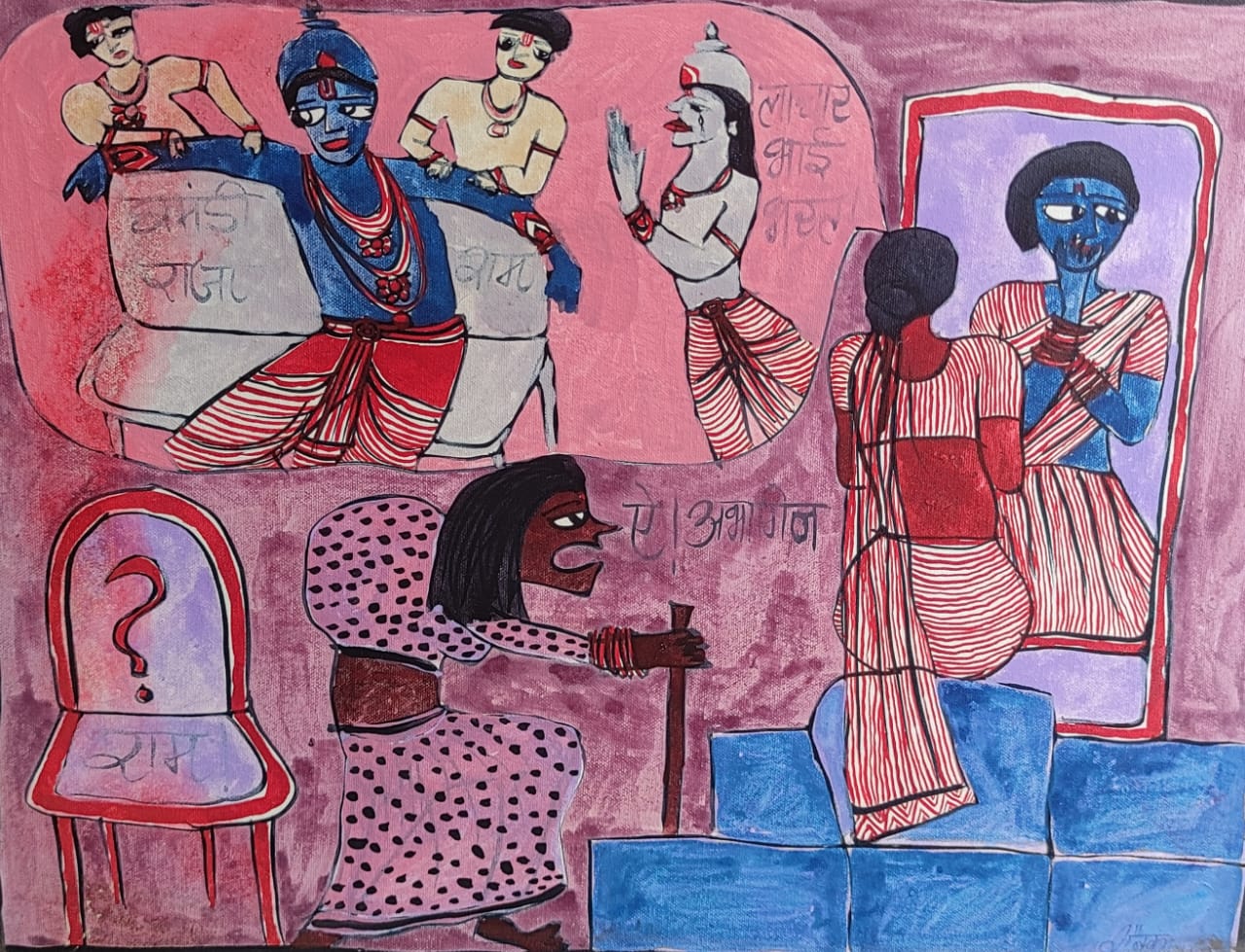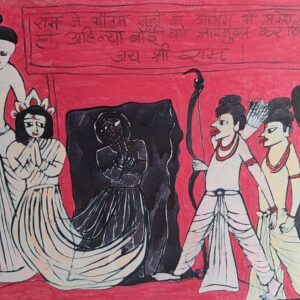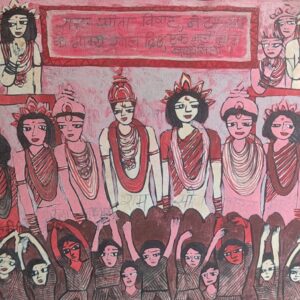“Manthara ka Shadyantra” – A Critical Folk Expression by Rounak Rai
In this evocative painting titled “Manthara ka Shadyantra”, contemporary artist Rounak Rai reinterprets a pivotal moment from the Ramayana—the manipulation of Queen Kaikeyi by her maid Manthara, which ultimately led to the exile of Lord Ram. But unlike classical depictions soaked in solemnity or melodrama, Rai’s version is satirical, symbolic, and hauntingly modern.
Rendered in his distinctive visual language—bold outlines, flattened perspectives, and a limited yet vibrant palette—Rai uses this composition not merely to narrate an epic moment, but to expose psychological and social dynamics at play.
Visual Analysis:
Manthara, seen here with exaggerated features and an almost grotesque, contorted form, is a central figure of manipulation. Her posture and expression scream of conspiracy and bitterness.
The mirror scene where Kaikeyi, divided in red and blue, looks at her transformed self, becomes a symbol of inner conflict, vanity, and corruption. The “blue” side of Kaikeyi possibly reflects her alignment with divine duty, while the red is suggestive of ambition and manipulation.
A vacant chair marked with a question mark and the word “राम” suggests the absence—or forced removal—of Ram from the kingdom. It becomes a haunting metaphor for power lost to ego and deceit.
In the background, we see Ram seated, perhaps unaware of the brewing betrayal, while Bharat and Lakshman hover as silent witnesses.
The text phrases like “घांटी राजा राम”, “लाचार भाई भरत”, and “ए अभागन” function like floating thoughts or judgments—giving voice to society’s collective conscience.
Rounak Rai’s Style & Intent:
True to Rai’s contemporary-folk sensibility, this work blends the naive charm of Madhubani and Kalighat styles with the conceptual depth of modern narrative art. His canvas is not merely a mythological scene—it is a social commentary. Through expressive distortion, layered composition, and embedded texts, he shows how individual ego, manipulation, and insecurity can disturb the order of dharma.
Instead of glorifying the moment, Rounak Rai humanizes it. He brings mythology down from divine pedestals and places it in a reflective, almost theatrical space, where every character is flawed, every act has a ripple, and every silence speaks.
In “Manthara ka Shadyantra,” Rai proves once again that his art is not just visual—it’s emotional archaeology, digging deep into the collective Indian psyche and retelling epics through the lens of our time.




Reviews
There are no reviews yet.